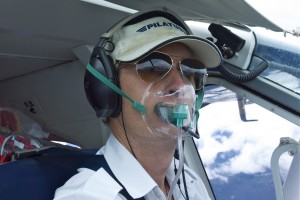 |
| Not a good look but keeps me conscience! |
The reason for the oxygen is to prevent the onset of hypoxia. In your regular commercial jet, the cabin is pressurised to around 7000ft which is plenty low enough to keep everyone conscience throughout a long-haul flight (although wouldn’t it be great if it was set higher and you just passed out for the whole flight until arrival?). A Pilatus Porter, like most light aircraft, cannot be pressurised so a supplementary oxygen system is used.
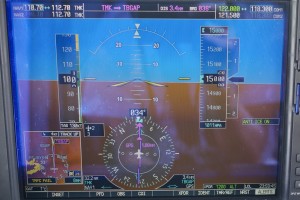 |
| Flying at 15,000ft |
The oxygen system we use is a simple continual flow system which has a small dial on the regulator which you set to your altitude. 1 =10,000ft, 1.5 = 15,000ft 2 =20,000ft etc. Once above 13,000ft I set it to “1”, as usually I’m not spending more than five or ten minutes up there whilst clearing a ridge of mountains. If I know I’m going to be spending longer, then I’ll set it to 1.5 or higher.
Now, in-case you didn’t know, hypoxia is a condition where your body/brain lack the oxygen to keep functioning properly. It’s pretty dangerous because it can occur without you even noticing until you eventually pass out. Not ideal.
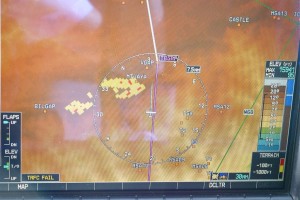 |
| Even at 15,000ft there’s still mountains above in places |
I should mention that if there’s passengers on board we try not to spend too much time above 13,000ft and fly routes accordingly around the higher peaks and ridges. However, one advantage they have over us is that they live in the mountains, so are far more accustomed to breathing at high altitude.
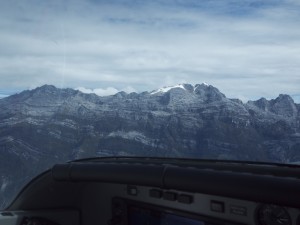 |
| Puncak Jaya mountain range |
The other “new” thing to me is using the anti-ice system (i.e. pitot heat which is used to measure the aircraft’s airspeed). Having been flying out here in the tropics for the last three years it’s something I’ve not really used during that time. I have to conscientiously remember to turn it on when the outside air temperature drops to 4 degrees or below with visible moisture (i.e. clouds) as per my PPL level training. Funny how things there were once so familiar when flying in the cold and wet UK can so easily be forgotten when not routine!
Discover more from Matt Dearden
Subscribe to get the latest posts to your email.
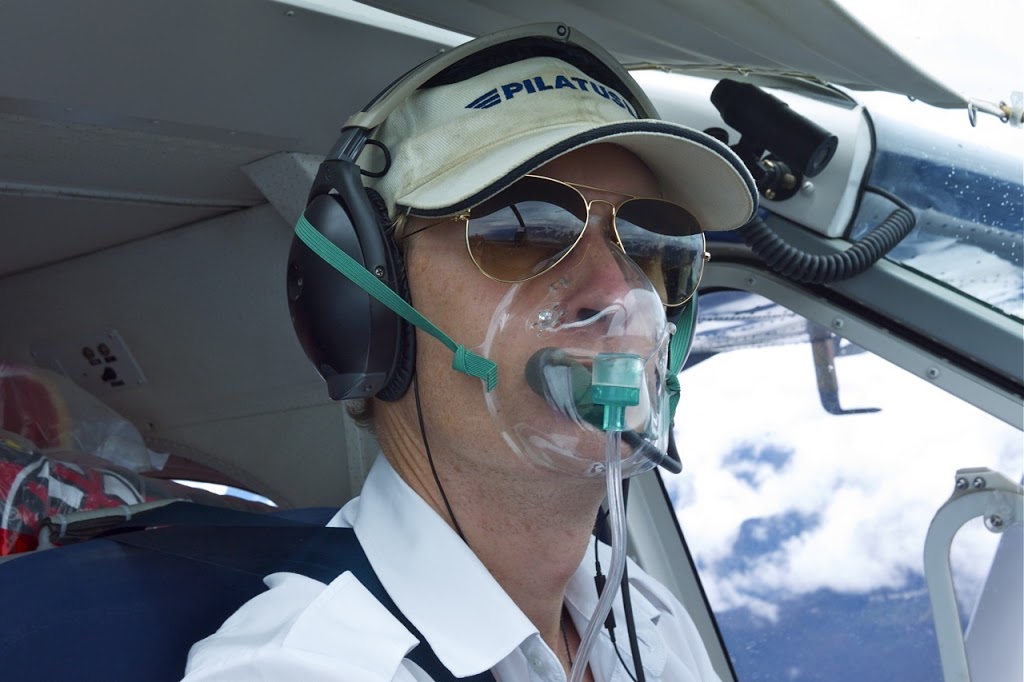
Hey Matt, still loving the blog mate. I’d love to be getting the flying time you get, although I did manage to complete an hours worth of circuits today as the weather wasn’t at all bad this morning in the SE of England, although a little gusty ( 200° at 12 knots ) but with a broken cloud base of 3,000ft it was good days flying. What percentage is your oxygen set at? Is it standard 21% or is it set a little higher? Just interested as I’ve never had the chance to fly anywhere near that high. I’m heading out to Austalia in 3 weeks but plan a little travel around while I’m in the region, ie Singapore, Tailand, and maybe Indonesia. I’ll be sure to give you a shout if I land up there. Take care and safe flying.
Many thanks Jon, always nice to know people really are read the stuff I post up here!
As for the O2 setup, it’s a continual flow system which delivers a pre-set flow of oxygen to an simple face mask. Take a look here: http://www.deltaoxygensystems.com for more information as that’s who make them (although I think they’re being replaced soon with on-demand systems).
I too will be travelling about over the Christmas holidays, mainly in Aus too, so might see around.
Hi Matt, Thanks for the link, I will have a look at that later. As for the blog mate, it is amazing, keep up the great work. It inspires us non commercial flyers to get out there and work harder!!! Maybe see you in OZ!